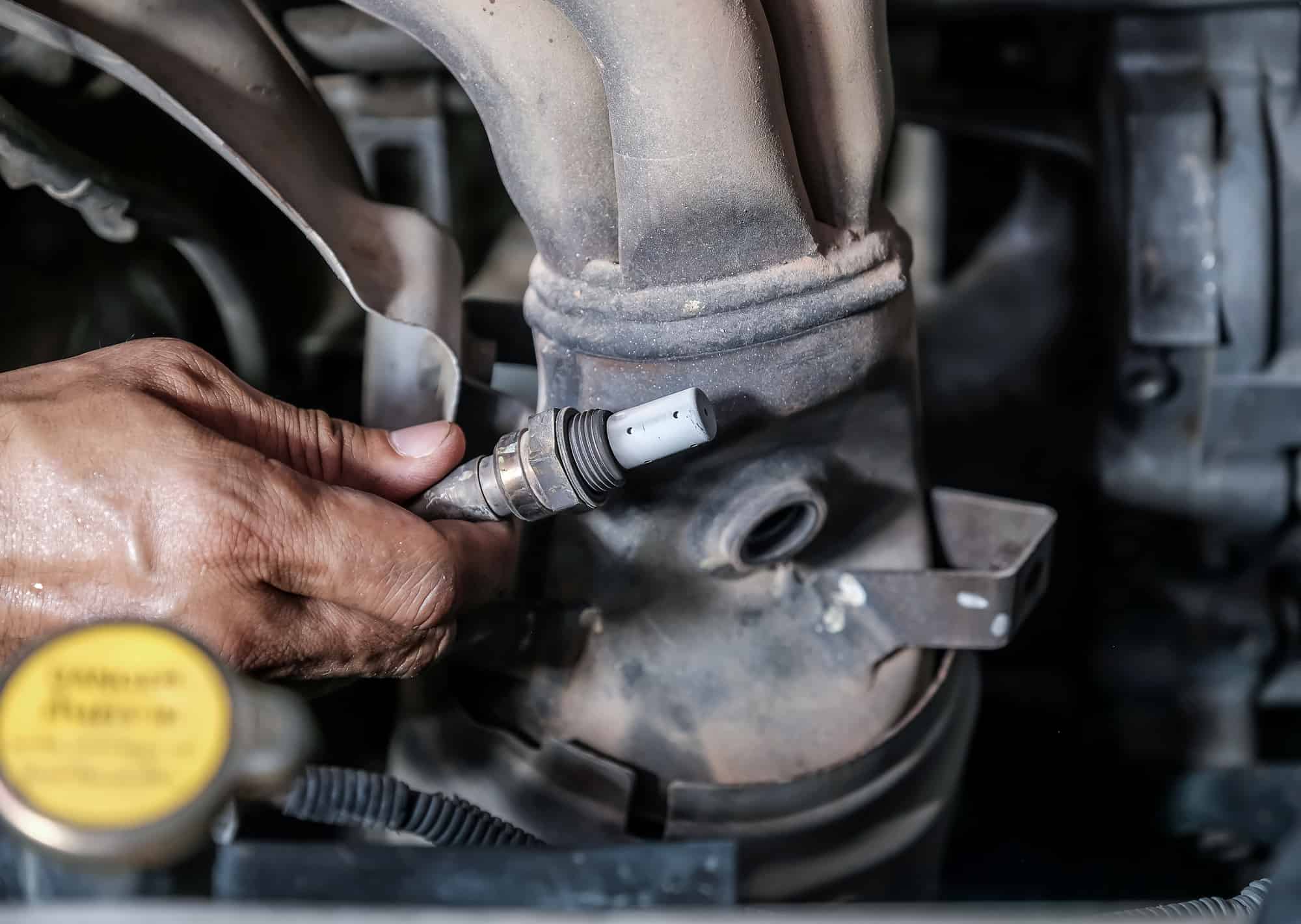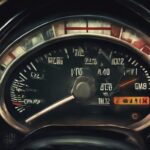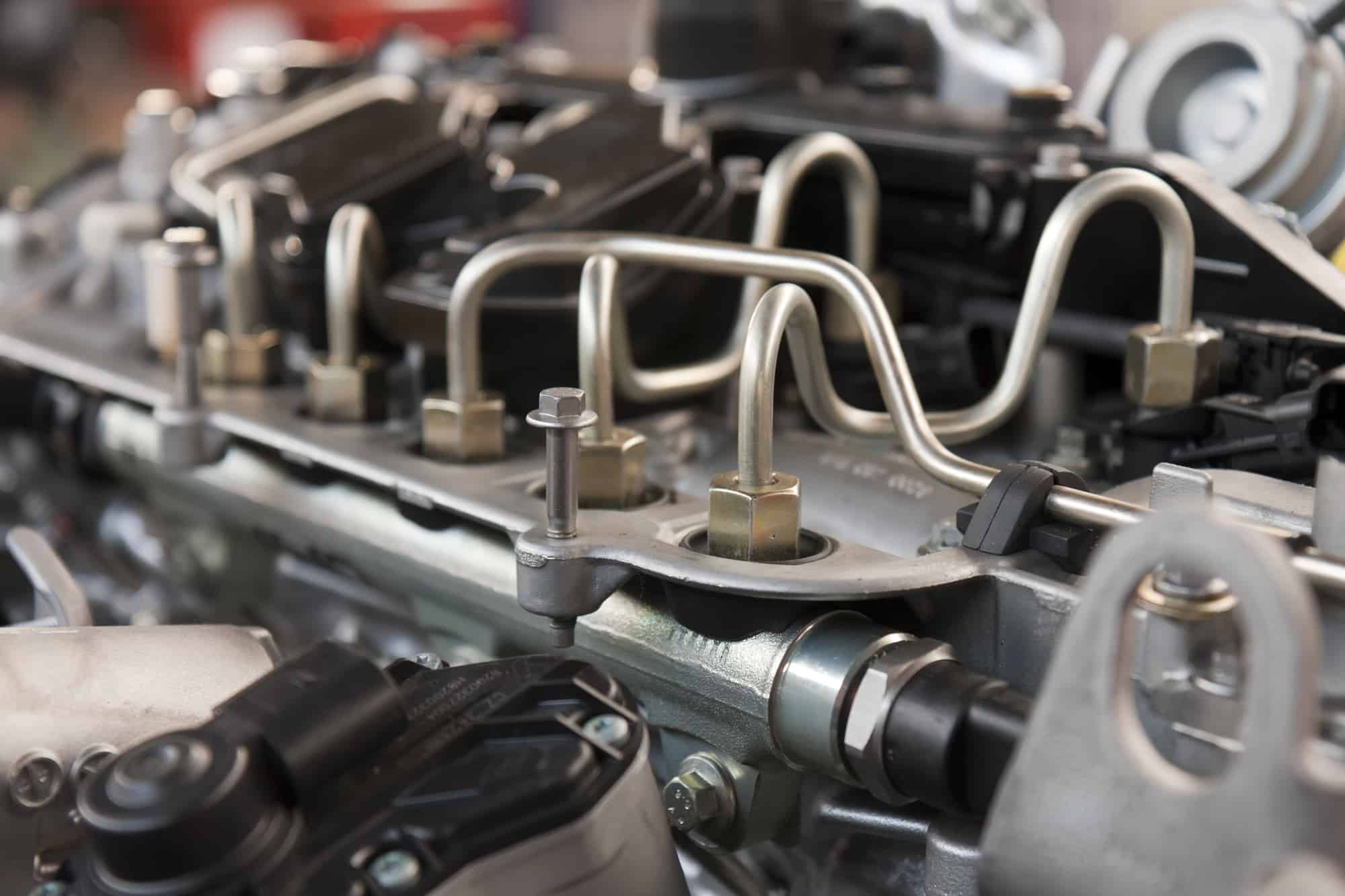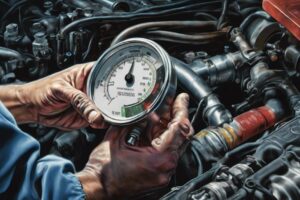What is Engine Code P0174
- P0174 Technical Definition: P0174 System Too Lean (Bank 2)
- P0174 Meaning: Fuel delivery is too low
- Most common cause: Dirty MAF, fuel pump, or oxygen sensor
- Risks for the engine/driver: HIGH.
You may damage engine components
- Emissions severity: HIGH.
The car won’t pass the emissions testing
- Estimated repair time: 1-2 days.
- Estimated repair cost: $200-$800
The engine code P0174 is stored in memory when the ECU detects a permanent lean condition on engine bank #2 (the bank of cylinders not containing cylinder #1).
The ECU is constantly adjusting the fuel delivery based on the information from its sensors. One of them, the oxygen sensor, provides a real-time feedback regarding the result of the combustion process.

Using the O2 information the ECU can fine-tune the fuel delivery and achieve the stoichiometric ratio of 14.7 parts of air for each part of fuel.
When the oxygen sensor reports a constant lean condition (even after ECU adjustments) the P0174 code is stored in the memory.
7 Common Symptoms When Code P0174 is Present
- Check Engine Light Lit
- Difficulty to start the engine, especially when cold
- Poor engine performance especially during wide open throttle acceleration.
- Poor fuel economy
- Increased emissions
- Possible engine misfires
- Possible back-fire
Possible Causes For P0174
- Oxygen sensor wiring (open, shorted, burnt)
- Oxygen sensor connector (loosely, corroded, disconnected or bent pins)
- Bad upstream oxygen sensor
- Vacuum leaks.
- Deficient Fuel Pressure System
- Bad or clogged Mass Air Flow sensor (MAF)
- Exhaust manifold leak
How To Diagnose The Cause Of P0174
For the purpose of this article, it’s assumed that you have a basic knowledge of safety precautions while working on your vehicle.
IMPORTANT: the diagnostic procedures listed below assume you only have the data trouble code P0174 present.
If you also have any other code related to the ignition system, emissions system or fuel system then you should start diagnosing them first.
Always refer to the appropriate OEM literature when possible. Original manufacturer diagnostic procedures should always have precedence over a generic workflow.
That said, let’s start the diagnostic process!
1. Preliminary steps
To discard a possible intermittent DTC condition, you’ll need to clear the ECU memory and complete a driving cycle.
- Read data trouble codes and take note of them.
- Clear data trouble codes memory.
- Perform a driving cycle (at least 5-10 minutes).
In case the Check Engine Light stays off then you may have an intermittent problem. If the light lit during your driving cycle then continue with the diagnostic process.
2. Visual Inspection
> Vacuum hoses: perform a meticulous visual inspection of all vacuum lines, including MAP sensor, PCV, brakes vacuum booster, fuel pressure regulator, etc.
Also, check the air intake hose looking for any sign of deterioration or leak.
> MAF condition: to inspect the MAF condition you will need to remove it from the vehicle first. Please refer to our MAF article for detailed instructions on how to diagnose and clean this important sensor.
> Oxygen Sensor wiring and connector: perform a meticulous visual inspection of the upstream O2 sensor wiring and connectors.
Look for burnt, damaged, corroded or deteriorated wires, also unplug the sensor and look for bent terminal pins, loosely connections, corrosion or any other possible indication of a bad connection.
> Exhaust pipe: any leak in the exhaust, especially before the upstream oxygen sensor will cause a false O2 sensor output. This may be interpreted by the Electronic Control Unit as a “lean” condition.
That’s why is important to verify the exhaust pipe condition and repair any leak including a bad exhaust manifold gasket leak.
Fix any wiring problem before continuing.
3. Fuel System Tests
> Fuel Pump pressure: using the appropriate adapter connect a fuel pressure gauge to the engine test port and check the fuel pressure (engine off and engine running). Compare the values with the OEM literature.
A lean condition may occur if the fuel pressure is not within its normal values. A low fuel pressure will cause a deficient fuel delivery and as a consequence a possible code P0174.
> Other Tests: a clogged fuel filter or even extremely dirty fuel injectors could also cause a low fuel pressure condition. Check the in-line fuel filter and the tank fuel filter element. Replace them as necessary.
Checking the fuel injectors condition is difficult without a proper test bench.
4. Scan Tool Tests
> Mass Air Flow Sensor: using a professional scan tool can save you significant time regarding MAF diagnostics. As mentioned earlier, refer to our MAF article for detailed instructions on how to diagnose this sensor.
> Upstream Oxygen Sensor Test: the upstream oxygen sensor is a key component in the emissions control system. You will need to verify its wiring, connector, electrical resistance as well as scan tool output.
Please refer to our oxygen sensor article for further instructions on how to perform an exhaustive diagnostic of this sensor.
How to Repair a DTC P0174
Depending on the diagnostics results you may need to do the following:
- Repairing the oxygen sensor(s) wiring and/or connectors.
- Replacing the MAF sensor
- Repairing the exhaust pipe
- Repairing vacuum leaks
- Replacing the fuel pump, inline filter or other fuel system elements.
- Replacing the upstream oxygen sensors.
You may find that sometimes all the above components are in good condition but the code P0174 is still present.
On “V” type engines you have the option to compare fuel trim parameters and oxygen sensor output from bank 1 to help get to the root of the problem. If you don’t find any explanation for the code you might consider an ECU problem.
Depending on the year and manufacturer of the vehicle you can reprogram the ECU or replace it if necessary.










